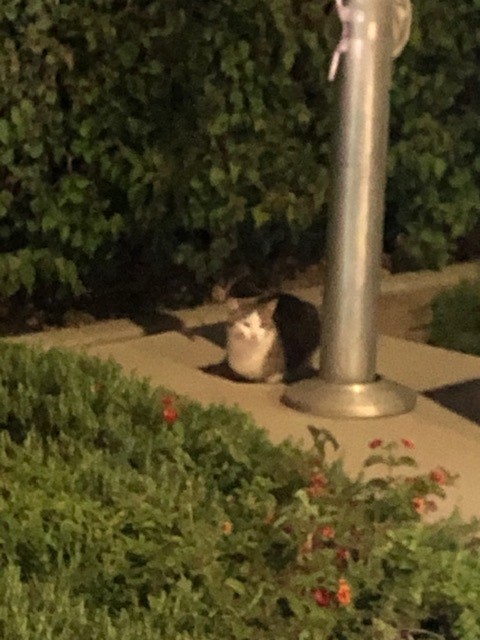
In 2012, Best Friends promised a No Kill Los Angeles by 2017. It didn’t happen and the five-year plan was extended to 10-years. If at first you don’t succeed, try, try again. And if you still do not succeed, well, just go ahead and lie about it. That is what Best Friends has done with this week’s announcement by CEO Julie Castle that the City of Los Angeles achieved No Kill in 2020 with a 90% placement rate.
They did not.
And we know they did not because: 1. The cat placement rate was only 88%; 2. Even if it was 90% (and it wasn’t) it compares poorly with the communities placing 99% of cats now serving millions of Americans; 3. The city pound admittedly killed healthy cats all year; and, 4. It closed its doors for much of the year, turning away even injured animals, resulting in animals being abandoned (including the little cat pictured here).
This much should go without saying: We don’t achieve No Kill by closing the doors to stray and injured animals. We don’t achieve it by killing healthy animals (as long as we keep that killing under 10%). Here’s a shocker, we achieve No Kill by not killing them.
But Best Friends is not a group that lets facts stand in the way of a good fundraising story:
1. The 2020 placement rate for cats was 88%. That’s not a judgment call. It’s math.
2. Even if it was 90% — and it was not — statistics from the best performing shelters in the nation, serving millions of Americans, indicate that ending the killing of all but irremediably physically suffering animals entering a shelter results in a placement rate of 99%+. Best Friends wants to claim that you can kill 10 times as many and still be No Kill, legitimizing the killing of healthy and treatable animals, while betraying the very ethos at the heart of the term “No Kill.”
3. Los Angeles Animal Services (LAAS) killed healthy “feral” cats, the very opposite of No Kill. In fact, because of a 2009 court ruling, Los Angeles Animal Services has spent the last 11 years, including all 12 months of 2020, killing healthy “feral” cats. The City has long claimed that in order to stop killing these cats, it needed to conduct an environmental impact report, the City Council needed to approve it, and the Court then needed to accept it before it would lift the injunction prohibiting TNR. EIR completion and City Council vote did not occur until December 8, 2020, the last month of the year.
4. For much of the year, the “shelter” closed its doors, stopped taking in animals, including — according to a lawsuit — stray and injured animals. That resulted in cats simply being abandoned, including the little cat pictured here who was left in the parking lot of the pound when the person trying to surrender him was turned away. A rescuer trying to help the cat was told by “shelter” staff that she needed a permit to trap him, would not be given a permit, and was not allowed to even provide food or water on threat of prosecution, hardly a vision for No Kill.
Not surprisingly, intakes were down almost half (46%) from the year prior, which begs the question why the placement rate was not even higher given the low intake, combined with the massive demand for pets by the public during the extended lockdown.
Does achieving higher placement rates require closing one’s doors to injured animals? Leaving cats in parking lots with no food or water (and threatening to prosecute rescuers trying to help them)? Killing healthy “feral” cats? Or falsely pretending, as Julie Castle just did, that only animals who are irremediably suffering — those animals for whom killing really is “euthanasia” — are losing their lives? Absolutely not. That’s not what the No Kill movement is about. It is, in fact, its antithesis. And pretending otherwise only leaves animals at continued mortal risk.
If Best Friends and LAAS officials actually did the work to create a No Kill L.A. in earnest — something that should not be hard to do given its extremely low per capita intake rate and its relatively high per capita funding rate — they could actually be the heroes they now only pretend to be.
————-
Have a comment? Join the discussion by clicking here.